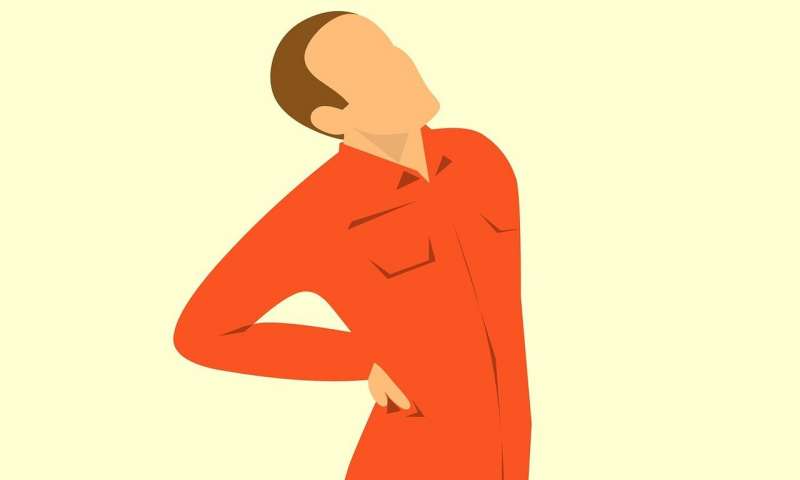What is Tailbone Pain?
Tailbone pain is common in people who sit for prolonged hours. It’s no longer news how prolonged sitting can harm your health, as it encourages a sedentary lifestyle in the long run, which could lead to certain health conditions such as obesity, diabetes, and cardiovascular disease. It also increases the risk of colon cancer, high blood pressure, osteoporosis, depression, anxiety, and more. According to the World Health Organization, around 31% of adults aged 15 and over were insufficiently active in 2008 (men 28% and women 34%) and approximately 3.2 million deaths each year are attributable to insufficient physical activity.
In addition to the many consequences of a sedentary lifestyle, tailbone pain when sitting is also common and a huge concern. Sitting in an awkward position for a long period can put pressure on your coccyx. Apart from sitting at your desk at work, you also sit while driving or commuting or while at home. As much as you try to reduce how much time you spend sitting, you will still always have to sit. Over time, the pain and discomfort from this would result in tailbone pain and how do you relieve or stop this?
How to Relieve Tailbone Pain
1. Get a Comfortable Chair
The kind of chair you use plays a huge role in your comfort and also helps reduce the risk of lower back pain and coccyx pain. Get an office chair for tailbone pain to help reduce the pressure on your tailbone as you sit at your desk and work all day. While choosing this chair, there are important things to look out for. This includes how adjustable it is; you should be able to adjust the chair to align with the curvature of your spine, so you can have your lower back and tailbone well-rested. It should also have proper lumbar support to help you sit comfortably and reduce the risk of tailbone pain.
The seat pan-tilt mechanism is also an important feature to look out for in a chair. This allows you to tilt the front of the seat up or down to reduce pressure on the lower back, allow proper posture, and also increase blood flow to the legs. The wedge cushion or sitting wedge is another feature that can help to some degree, as it gets your body into a more comfortable position as you sit.
The goal for your office chair is comfort, considering that you’ll be sitting for prolonged hours.
2. Get a Standing Desk
While you might have gotten the perfect chair to help your tailbone pain, you must also realize that sitting for prolonged hours contributes to that risk. To avoid this, you shouldn’t get used to sitting for too long. A great way to combat this is by getting a standing desk to enable you to switch between sitting and standing at intervals. You can choose to sit for an hour and stand for 30 minutes or allocate the same amount of time to both sitting and standing to create a balance.
Getting a standing desk supports your overall health, as it not only helps reduce your chances of getting a tailbone pain but also reduces your risk of other illnesses that may be caused by a sedentary lifestyle. It allows you to stretch your muscles and be physically active, rather than staying on a spot. This will improve your mood and also subsequently aid in your productivity.
For a better effect, you can consider a sit-stand adjustable desk to enable you to make an easy switch between sitting and standing and also to adjust it properly to suit your height.
3. Get Your Sitting Posture Right
You can get the best chair and desk for your work but if you get your sitting posture wrong, your tailbone will still suffer for it. To get the proper sitting posture, ensure you place your body weight on your sit-bones and thighs, and sit upright. If you use an ergonomic chair, the lumbar support it gives will help you maintain this position, as it supports your lower back while you sit upright.
Avoid hunching your check or slouching your neck, which is quite common for many people, since it seems like the most comfortable position to get into while you work. However, while it may seem comfortable at that moment, you will be hurting your muscles, which would eventually have long-term effects. This position is also sometimes easy to get into due to poor furniture; if you have a proper office chair designed to suit the curvature of your spine, you won’t always have to succumb to the poor sitting posture by default.
Mastering the proper sitting posture might take time, as you have to actively get into that position. Sit upright, with your shoulders relaxed and your feet flat on the floor or a footrest. Keep a small distance between the back of your knees and the chair and keep your knees at 90 degrees. To complement this sitting position, you need to ensure your monitor or laptop is placed correctly. The screen should be at arm’s length and the top of the screen at eye level so that you won’t have to constantly bend your neck or spine to work.
4. Chair Padding
Chair padding might not be necessary if you have a good chair with the right materials to help you sit comfortably. However, if you don’t have that, you will have to actively remove stressors that irritate. If you use a wooden seat, for example, you can put foam or a pillow or soft materials to help you sit comfortably and reduce the tailbone pain.
Conclusion
Tailbone pain while sitting is common but you can avoid it at all costs or relieve it by following the tips shared in this article. It might take awhile before you master the proper sitting position and get used to your office chair but it will get better with time and you can worry less about any form of pain in your tailbone.







